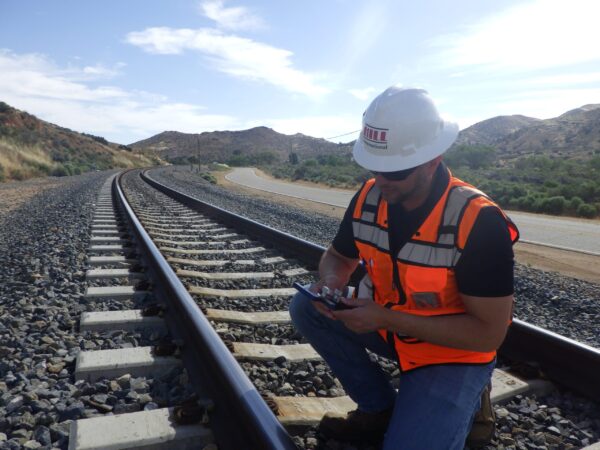
March 12, 2025 | Articles
Get Stoked: Hill International Makes Big Waves in Spain’s Surfing Scene

by Vincenzo D’Ignazio, Hill International Risk Manager
Billion-dollar-plus, or “mega,” infrastructure projects present a complex risk profile. Often integrating several component systems, such as roads, railways, ports, and airports, these megaprojects present “system of systems” challenges and often have a lifecycle spanning over several decades.
In addition, megaprojects have numerous outside influences and requirements compared to most civil engineering projects. This includes input from multiple stakeholders, project specialists, and operators, who all may have direct influence on many aspects of the project. These inputs ensure the project is planned, designed, and constructed to meet public needs and achieve the expected benefits, all delivered within the approved budget and schedule and to the expected standard of quality.
However, despite this added attention and the understanding of the complexity of megaprojects, megaprojects often fail to meet their established goals within cost and timeline constraints. For example, consulting firm McKinsey estimates that 98% of capital infrastructure projects incurred cost overruns and delays. The average cost increase is 80% of the original value and the average slippage is 20 months behind the original schedule. Even in cases of “ordinary” construction projects (e.g., roads) delivered by experienced companies, cost overruns and schedule delays are all too common, and these overruns and delays continue to occur despite our increased understanding of the risks involved.
One of the main reasons for these failures is the lack of a robust project risk management (PRM) system. Essentially, the many project risks inherent in megaprojects were not managed well during the various phases of their lifecycles.
Industry leaders recognize that megaprojects all over the world often lack strong PRM systems and, therefore, suffer from unmanaged risk exposures likely to result in project failures. Organizational issues are a common cause of weak PRM systems: project organizations may allocate insufficient resources and time to risk management, while others underestimate or misunderstand the importance and power of a PRM system, assigning the wrong specialists to PRM activities and failing to commit to PRM as an approach.
The consistent application of PRM principles in creating and implementing PRM systems for infrastructure megaprojects reinforces overall project value through the proper management of the relevant risks. Namely, the team should conduct project value definition in the early project phases (prior to project approval). Value realization is a primary goal in later project phases, including operations, but is dependent on the support of mature PRM systems to realize its stated goals.
A weak PRM system results when risk management is undertaken sporadically and/or based on heuristics. For example, cost and duration contingencies might be allocated regardless of actual risk exposures and based only on arbitrary, pre-determined guidelines (e.g., 10% contingencies across a portfolio, with no detail or understanding in risk identification or assessment).
Dr. Yuri Raydugin, P.Eng., M.B.A explains: “The maturity level of a PRM system of an infrastructure project depends on the sophistication of deployed PRM modules and consistency of their implementation. As a case in point, a standard modern PRM system includes the following two basic modules: traditional (scoring) PRM and Monte Carlo cost and schedule risk analysis (CSRA) to estimate project contingencies. Depending on PRM context, additional higher-maturity-level PRM modules to support risk-based decision-making might be called for: selection of project alternatives (scopes, bidders, design options, contracting strategies, etc.), estimation of cost escalation, technology risk assessments, upgrade of CSRA models to their non-linear versions to count risk interactions, etc.”
Delays in the construction industry are common and sometimes unavoidable, and if incurred they may result in a breach of contract—for instance, when key contract milestones are missed. This is when liquidated damages occur. In this sense, the use of advanced technologies (e.g., Machine Learning, Big Data, and Artificial Intelligence) supported by historical project data, could be an important tool to determine likely what-if scenarios and predict the potential cost impact against the megaproject’s current construction schedule.

To make PRM systems for infrastructure projects robust and efficient, there is one cornerstone condition: organizational leadership, including top management, should become champions of PRM system development and implementation. This support guarantees that PRM is an important process integral to project success and that risk management activities are not a tick-box exercise.
This approach allows private companies to have a more conscious risk exposure that shelters them from unexpected losses that, if underestimated or unforeseen, could undermine the project or even the entire business asset. Instead, if given the right priority, PRM can give them a long-term competitive advantage.
Hill International Risk Manager Vincenzo D’Ignazio has more than a decade of experience helping to manage and deliver complex, high-profile infrastructure projects, including rail and transit projects. In addition to PRM system development and implementation, he is also an expert in quantitative risk analysis, project risk quantification, and operational risk management. He is based in Hill’s Rome, Italy, office.
Share

March 12, 2025 | Articles
Get Stoked: Hill International Makes Big Waves in Spain’s Surfing Scene

March 9, 2025 | Articles
Project Manager TJ Pinales: Helping Along the Road in San Antonio

March 4, 2025 | Articles
Balancing the Equation: An Interview with Project Manager Tracy Wiyrick

March 1, 2025 | Articles
A Lifelong Project: Calypso Kyriakopoulou’s Multifaceted Career in Construction

February 10, 2025 | Articles
Dual Delivery: A Viable Strategy for Complex Transit Projects

January 23, 2025 | Articles
Plotting a Roadmap to Success on the Torres de Colón Renovation

December 12, 2024 | Articles
Progressive Design-Build for Rail and Transit Projects: Room to Run

December 9, 2024 | Articles
Unlocking Growth: Maximizing the Benefits of the SBA’s Mentor-Protégé Program

December 8, 2024 | Articles
Mediterranean Luxury a Century in the Making: Four Seasons Resort Mallorca at Formentor